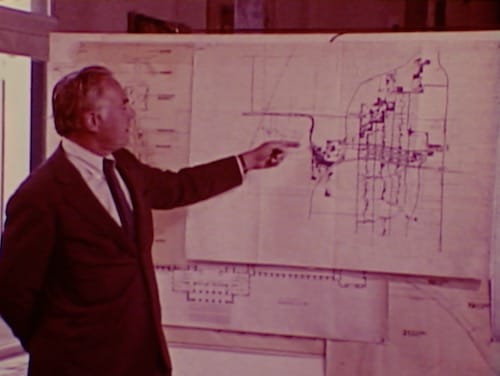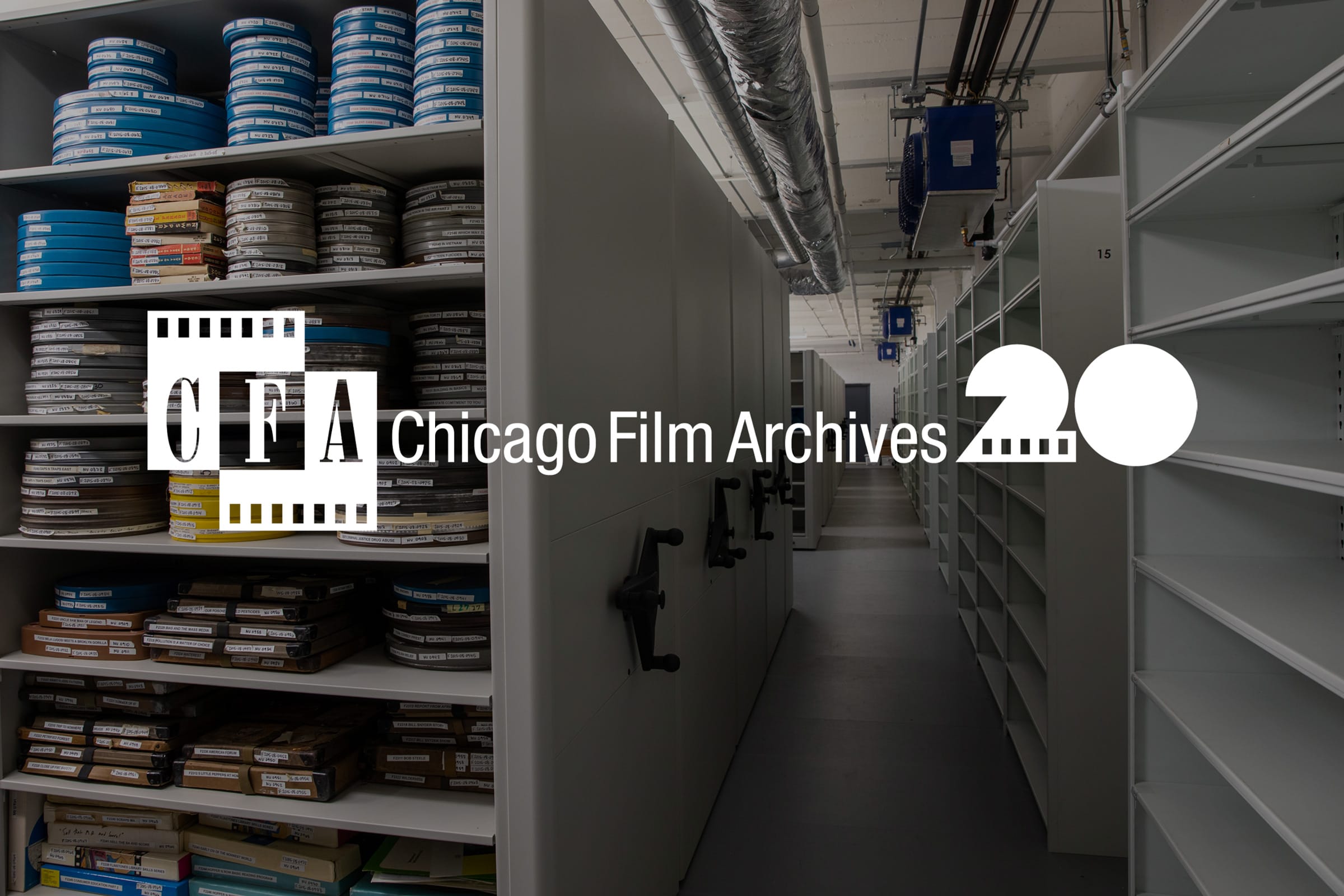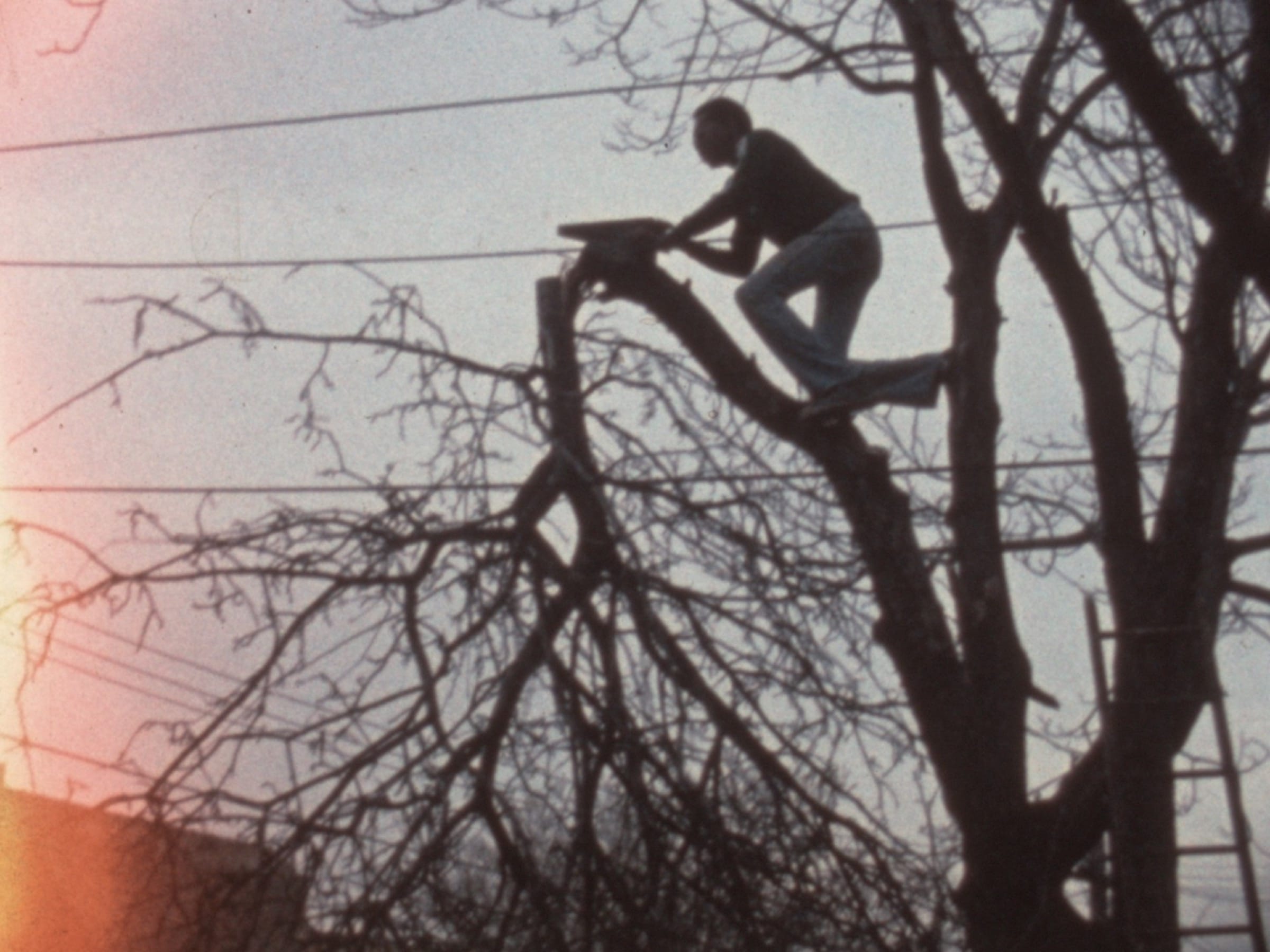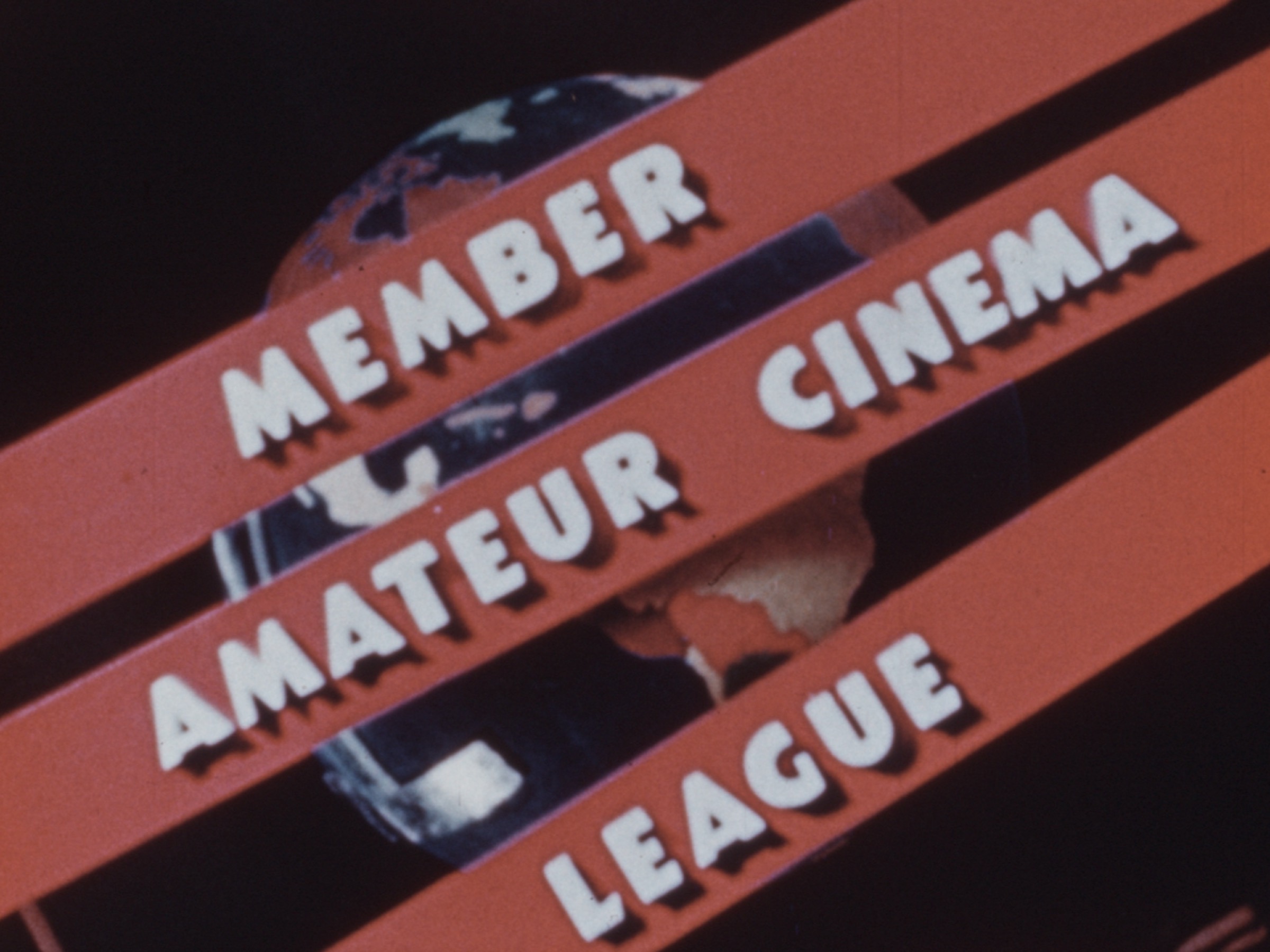
Architect Harry Weese describes the structural design of Park Forest South, IL (today known as University Park)
Over the next six weeks, CFA will present newly digtized episodes of Earthkeeping – a series produced in the early 1970s for WTTW that explores environmental, ecological and sociological issues. In presenting this series, we hope to reintroduce DeWitt Beall, a Chicago-based filmmaker primarily active in the 1960s and 70s. Now to episode four, “Megapolis” (pardon the color fade):
[*Stream the episode here, on the CFA website]
“Megapolis” contains insightful interviews with Lewis Mumford, who was a prominent early figure in urban planning and the history of cities. Mumford predicted the expansion of cities into megalopolises in the 1930s in his book, The Culture of Cities, and in this episode reflects on how cities will continue to evolve. The episode also looks at Illinois-specific neighborhood development through an interview with architect Harry Weese. At that time, Weese was working on the design of Park Forest South, IL (today known as University Park). As Weese predicted for the community in 1972, “Park Forest South is not going to be an instant Paris, or anything of its kind, but it will be a community big enough to encompass many activities, including employment, education… it also provides for varying lifestyles and income groups.” (Any Park Forest South/University Park residents out there care to comment on this prediction?) Weese and the narrator put emphasis on the neighborhood’s innovative walkway system, which allows for pedestrians and bicyclists to travel without intersecting with major roads.
Much of the content in “Megapolis” is common knowledge today (cars are bad for the environment, etc.), but it is necessary to consider the episode in context, looking at how it relates to the history of environmental activism. The Earthkeeping series was produced only three years after the establishment of the Environmental Protection Agency, and as the other episodes of the series attest, during a period of rapid urban growth and industrialization. The episodes of Earthkeeping are by no means objective; the series is less documentary and more a call to action. The content of Earthkeeping greatly reflects the personal ideology of the filmmaker. In an email correspondence, Elina Katsioula-Beall (DeWitt’s second wife) pointed out how important the issues of the series were to DeWitt’s personal life: “It is certainly safe to say that DeWitt was very interested in all sociological and ecological issues. He had a respect for earth and for all life, long before this was fashionable.”
Just as the “City Life” episode concludes with a plea for community participation, so does “Megapolis” implore viewers to take action. Architect Richard Saul Wurman (who later co-founded the TED conference) expresses his disdain for public inaction: “Apathy has destroyed the city more than wanton destruction. I mean, there has to be a change of attitude to save the city.” Ultimately, it is up to the citizens of the city to control the growth of our man-made environments.







